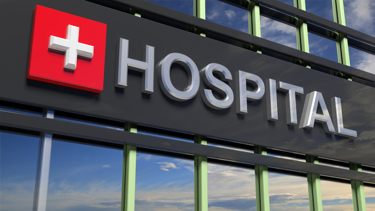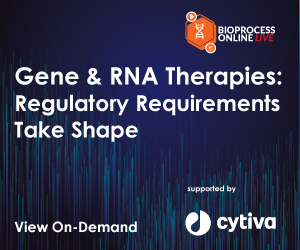Manufacturing Therapeutics In Hospitals: Re-envisioning The Bioprocessing Paradigm
By Erich H. Bozenhardt and Herman F. Bozenhardt

Most hospital-based therapies are “patient ready,” pulled from inventory and used with minimal preparation (diluent mixing or measuring at most). Hospital staff are usually pressed for time and are optimized for simplicity. However, ATMPs (advanced therapy medicinal products) are changing how we think about how we deliver therapies. Collection, isolation, delivery, and preparation (e.g., thawing, flushing DMSO) of the therapy may have to be carefully choregraphed with the preconditioning treatment of the patient. In the case of autologous therapies, the hospital will be the first step in the manufacturing process with the procurement of the starting cells from the patient.
In traditional biopharma, it is easy to consider manufacturing to end at the biopharmaceutical manufacturing facility’s dock door, but the success of these new and complex therapies requires partnership with those administering them, which is a new paradigm.
Cell & Gene Therapies Make Us Rethink Manufacturing
Our minds may envision manufacturing taking place in a factory, but the large-scale (across a distributed network) separation and banking of blood plasma can also meet the definition. We are clearly in a new world where a new definition that includes the term “micro-factory” might be more appropriate.
The good news is the FDA has published specific guidance on human cells, tissues, and cellular and tissue-based products (HCT/Ps) that addresses what are regulated products and what are medical practices. The EMA has also provided clarification, but it allows a hospital exemption for ATMPs. This gives us the base regulatory bounds, but based upon the therapy we intend to present, our industry must create the manufacturing model.
Some of the cell and gene therapies challenge how we think about the manufacturing process. To demonstrate control, the industry invests significant effort in starting with a well-characterized cell bank. For patient-derived autologous therapies, the starting cell sample will vary, including cell count, target cell percentage, impurities, level of gene expression, cell growth rate, and advantageous virus burden. Some of these variations are due to the donor, but some can be controlled by the collection process. We must also recognize that collection of plasma from a patient must be done under the CDC’s BL-2 guidance, with the applicable safety features and controls. Allogenic cell-based therapies can also have operations that change the composition of the product (e.g., washing DMSO from an allogenic CAR-T therapy before administration).
Risk-based assessments are the foundation for building controls around processes and products. When considering where different parties are responsible along the whole life cycle of making and delivering a product, it is important to remember that the party holding responsibility for a particular step should be the one best able to control the risk. Expanding cells under sterile conditions is something that is well practiced in a biopharmaceutical product, but what about isolation of cells from a biopsy? Leukapheresis is a relatively new term to most in the biopharmaceutical space, but to an oncologist or a phlebotomist, it is just another procedure. As the process is developed and characterized, that difference in collection and administration needs controls, as it can’t be assumed that every clinic will execute those steps in the same way.
A risk particular to autologous therapies is the transportation/preservation of the donation and therapy. The logistical challenges associated with this type of therapy must include “point of care manufacturing.” Many of the clinics that are earlier adopters of these therapies have cleanrooms focused on performing research or making clinical material and would like to manufacture internally.1 The regulatory framework can make this cumbersome, particularly across multiple hospitals (currently in the U.S., each site/hospital would need a BLA). There is the potential in the future, with further regulatory development, that “off the shelf” closed automated systems (e.g., Miltenyi Prodigy, Lonza Cocoon, Adva X3) could be viewed as medical devices to enable point of care. The discussion on where manufacturing occurs is and will continue to be a source of debate. For today, companies are building centralized manufacturing sites, with process/product-specific nuances and capabilities (and CDC safeguards) according to where in the product life cycle the responsibilities lie.
Biotech And Hospitals: It’s A Partnership
“This is the way we have always done it” is a well-worn phrase. While we are used to the manufacturing supplier vs. customer relationship between biotech and hospitals, as these complex therapies are commercialized, we must change to think of it as a partnership. That partnership will vary with each hospital, its capabilities, specialties, and staff skills. There are a few cases of hospitals going it alone to manufacture approved therapies. These are cord blood-based products utilizing well-established methods for primarily supplying a single hospital or hospital network. In this case, although basic, some experience may go a long way to building up capabilities for more therapy capabilities in time. Most hospitals, however, will not understand what is involved in manufacturing a licensed product.
There will be differences in expectations from site to site that will require an assessment of best practices to find the appropriate solution. Aseptic practice is an example of an area where there are different standards and practices. One example is the handling of blood bags. Typical clinical aseptic practice is to use a spike to puncture a diaphragm within an access port. This procedure would happen in an uncontrolled environment, whereas in the manufacturing mindset, this would be an open aseptic operation requiring an ISO 5/Grade A area. When thinking about solutions, the knock-on effects need to be considered. For example, one solution proposed for aseptic access to a blood bag was to add an aseptic connector to the bag. To those in the biopharma industry, it seems simple: get the single-use system (SUS) supplier to add a connector on the normal sterile access port. The challenge is that there isn’t one single-use assembly design; different hospitals use different apheresis systems. Then, as the product scales, these custom bags need to make it to the hundreds of hospitals. Each hospital may have a variable need, depending on their patients and therapies provided. With that, there will be a need to have custom SUS producers and training to ensure that this custom assembly is used only for those patients in the hospitals that are receiving the particular company’s therapy.
Hospitals have developed workflows to be able to provide personalized treatment. Explicitly discussing/mapping those workflows can help the hospital and ATMP license holders build context and execution.
Just like large pharma companies, hospitals can have different departments that have specific roles and responsibilities. The structure of the organization will vary by hospital system and will most likely evolve and expand in skill level. There may be a need for these departments to interact differently. As an example, a critical care time-sensitive product had to be received and dispensed from the pharmacy, but the pharmacy didn’t have cryogenic freezers to store the product. Ultimately, the product was stored in freezers in a different department. Mapping of the workflow (including the groups) within the context of regulations and optimal care for the product and patient can help identify situations like this and allow them to be solved, rather than assuming the product is like another medicine once it is received at a hospital.
Working With Hospitals On Facility Design
A facility design needs to be appropriate for use, and that will include the hospital, which often lacks the necessary HVAC system and proper space. The biopharmaceutical industry has created a standardized approach for cleanroom design, but so have hospitals and tissue banks. While there may be future regulatory development, today, for operations that dictate crossing from medical practice into manipulation, the typical approach used by industry is expected. The EMA Guidelines on Good Manufacturing Practice specific to ATMPs borrow facility and gowning sections from Annex 1. Given the need for CDC compliance and safety in handling blood-/plasma-based products, PPE, airlocks, HVAC, and facility monitoring take on new meanings within the context of a hospital.
Similar to facility design for contract manufacturers, it needs to be determined if the facility or any portion of it will be used for another product, possibly from a different innovator.
Conclusion
Traditional biopharmaceutical companies have evolved into higher levels of industrialization over time. Given a process, we can find a way to manufacture it at scale. Now the biotechnology industry needs to grapple with a new challenge that is outside our core skills and focus on the personalization of therapy and its novel delivery. For centuries, medical practitioners have been treating one patient at a time. Building a common understanding as partners will allow these groundbreaking therapies to impact the lives of patients at scale.
Reference
1. Meeting Summary of the 17th Cell Therapy/FDA Liaison Meeting November 23, 2020, as prepared by International Society Cell and Gene Therapy
About The Authors:
 Herman Bozenhardt has 45 years of experience in pharmaceutical, biotechnology, and medical device manufacturing, engineering, and compliance. He is a recognized expert in the area of aseptic filling facilities and systems and has extensive experience in the manufacture of therapeutic biologicals and vaccines. He has a B.S. in chemical engineering and an M.S. in system engineering, both from the Polytechnic Institute of Brooklyn. He can be reached via email at hermanbozenhardt@gmail.com and on LinkedIn.
Herman Bozenhardt has 45 years of experience in pharmaceutical, biotechnology, and medical device manufacturing, engineering, and compliance. He is a recognized expert in the area of aseptic filling facilities and systems and has extensive experience in the manufacture of therapeutic biologicals and vaccines. He has a B.S. in chemical engineering and an M.S. in system engineering, both from the Polytechnic Institute of Brooklyn. He can be reached via email at hermanbozenhardt@gmail.com and on LinkedIn.
 Erich Bozenhardt, PE, is a lead process engineer for regenerative medicine operations. He has 15 years of experience in the biotechnology and aseptic processing business and has led several biological manufacturing projects, including cell therapies, mammalian cell culture, and novel delivery systems. He has a B.S. in chemical engineering and an MBA, both from the University of Delaware. He can be reached via email at erichbozenhardt@gmail.com and on LinkedIn.
Erich Bozenhardt, PE, is a lead process engineer for regenerative medicine operations. He has 15 years of experience in the biotechnology and aseptic processing business and has led several biological manufacturing projects, including cell therapies, mammalian cell culture, and novel delivery systems. He has a B.S. in chemical engineering and an MBA, both from the University of Delaware. He can be reached via email at erichbozenhardt@gmail.com and on LinkedIn.

